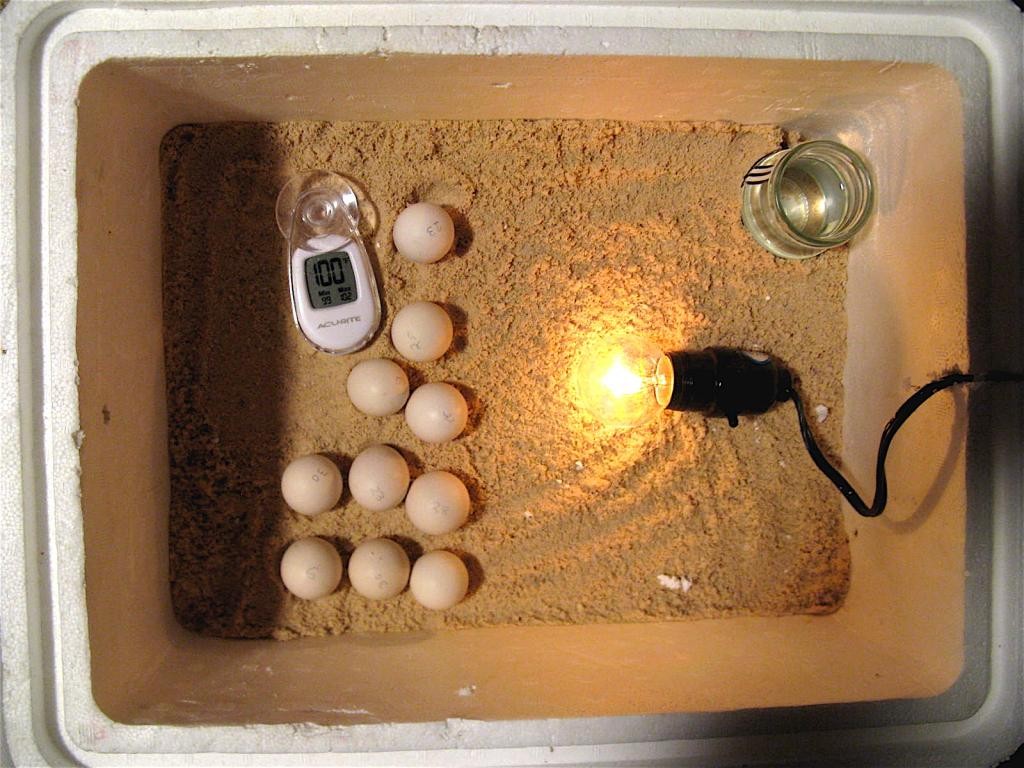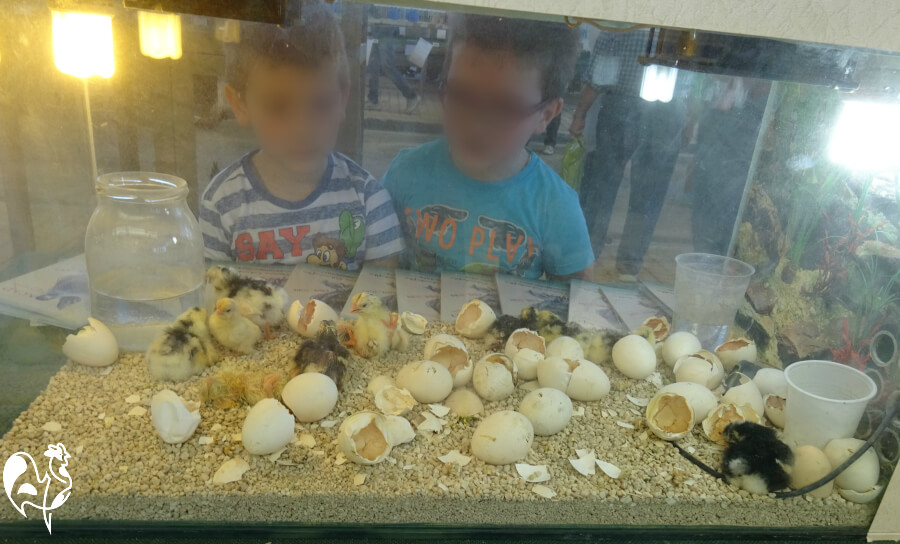
Rotate egg 45 degrees every 12 hours. Keeping the temperature between 99 and 102 F and turning the eggs at least 3 times a day.

Before placing the eggs inside turn on the heat source and measure the temperature and humidity over a 24-hour period making adjustments as necessary to create the optimal environment.
Incubating eggs with heating pad. In conclusion yes you can hatch eggs using a heating pad. When using a heating pad to hatch your eggs you will need to turn the egg regularly this ensures that the egg gets the necessary amount of warmth on all sides. You also need to constantly check the heating pads temperature.
Eggs that are too hot will not hatch and will eventually become damaged. Ive seen temperatures from 93 to 115 so I am pretty shocked that these eggs are developing. I will be even more surprised if they hatch.
I removed a couple developing cracked eggs and the glowing infertile eggs this morning so I am now down to 17 eggs. Here are a few pictures of my little eggsperiment. I am using the Sunbeam Xpress Heat heating pad.
Youll also need a heat source such as an adjustable heating pad or a light bulb. For the humidity you can use a pan with a sponge in it. The next step in learning how to incubate and hatch chicken eggs is learning how to hatch them.
During the final days before hatching the eggs will move around a lot. You can give your baby quail a heat source by placing a heat lamp or reptile heating pad in the corner of the brooder. Preparing Your Quail Eggs for Hatching If this is your first batch of quail youll probably be in a rush to get your eggs into the incubator.
Python eggs should be incubated at 86 to 91 F. An incubator is essential to provide stable warm incubation temperatures. A simple incubator can be made from a Styrofoam box raised above a heating pad until the desired temperature is achieved.
Also an aquarium filled with water can provide stable heat from a submersible. Mist the egg daily with a small amount of room temperature tap water. Rotate egg 45 degrees every 12 hours.
The recommended temperature in this type incubator is 102 F. The reason for different temperatures is that circulating air warms all points around the egg shell while still air temperatures are warmer at the top of the egg than at the bottom. Therefore increasing the temperature at the top of the egg will compensate for the eggs cooler parts.
Incubating chicken eggs is a simple process of placing fertilized eggs into your incubator for 21 days. Keeping the temperature between 99 and 102 F and turning the eggs at least 3 times a day. But there are many little things you can do to help improve your hatch rate.
Hatching your own chicks is so much fun. Using hand warmers or heating pads. In case you dont have a lamp or direct access to electricity using hand warmers or heating pads as a substitute can also help hatch the quail eggs.
Heres how you can adopt this method in hatching quail eggs. Activate the hand warmers you have and place it in a box. Line the incubator with gravel paper and place the eggs on their sides on the gravel paper.
Buy a reptile heating pad. On day 15 after locking down your incubator its time to set up the brooder. Newly hatched quail need a heat source in their brooder.
What I use to incubate the eggs is NOT an incubator. I use a peoples heating pad that has three temperature settings. I built a rectangular frame of 2 x 2 wood pieces that fits over it.
I put screen over the top of the wood frame and place the shoebox sized containers of moist vermiculite and eggs on top of it. Once you have the incubator set up with the correct heating and humidity its time to set the eggs inside to begin the process. Carefully lay eggs inside of the incubator in even spaced spots.
Turn the eggs four to six times per day. Using an electric kettle to heat water for the jars. During the day those jars needed to be refreshed with boiling water every 3-4 hours.
To do this boil the water first then quickly open the hatching box pull out the jars close the lid refill and then replace. In this video I teach you how to incubate duck eggs and when to stop turning them. I break down step-by-step the entire processbackyardchickensIncubation.
It takes 21 days on average for an egg to hatch once incubation begins. Before placing the eggs inside turn on the heat source and measure the temperature and humidity over a 24-hour period making adjustments as necessary to create the optimal environment. If the humidity is too high or low use a sponge with more or less surface area to.
Place a heating pad under the egg-laying container or direct a basking light on it making sure not to melt the plastic. The soil should be warm getting slightly cooler towards the bottom back of the box. Heating Pad 150x212 9w.
But they also make this still air kit for incubating reptile eggs. It includes a digital hygrometer and thermometer a wafer snap thermostat reptile hatching substrate and cups to hold the eggs. The design can manage up to 50 eggs depending on their size but it measures 75 x 18 x 18 inches.
It works by warming air with a radiant heat tube. Make adjustments to the heat and humidity until they are at optimal levels. The temperature should be kept at 995 degrees through-out the incubation.
It should be between 40 to 50 percent for the first 18 days and 65 to 75 percent during the last four. Incubating the Eggs 1. Keep track of time and vital statistics.
To make a DIY incubator you can fill the plastic box with the substrate and lay the eggs on top. Then place this box with eggs inside a larger box. Then fill it water and heat the water with a submersible water heater like this.
The lid of the large box must have holes for ventilation. The relative humidity required to incubate snake eggs falls within the range of 75-85. The covered Styrofoam chest is then placed on a heating pad which is set on its lowest heat setting.
The ideal temperature range for most incubation lies between 78 and 84F. The average incubation period for most snakes ranges between 55 and 60 days. Remove interior squares of the egg crate with pliers to create a spot for a small electric fan to sit.
Make sure the fan is close to the heat source and orient it so it sucks air from the heat source and dispenses it upward and outwards into the incubator. Feed the power cable from the fan out through the same hole as before.